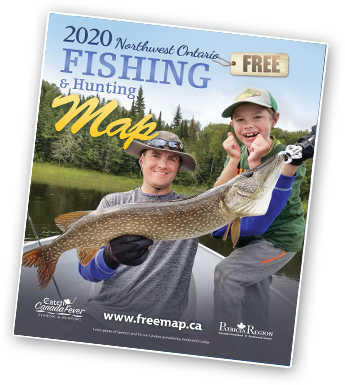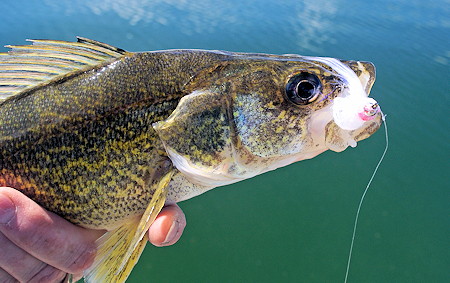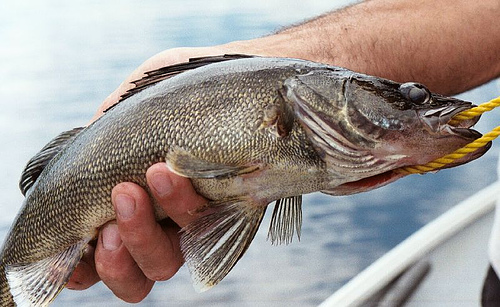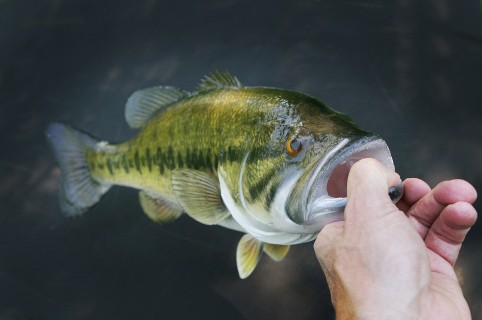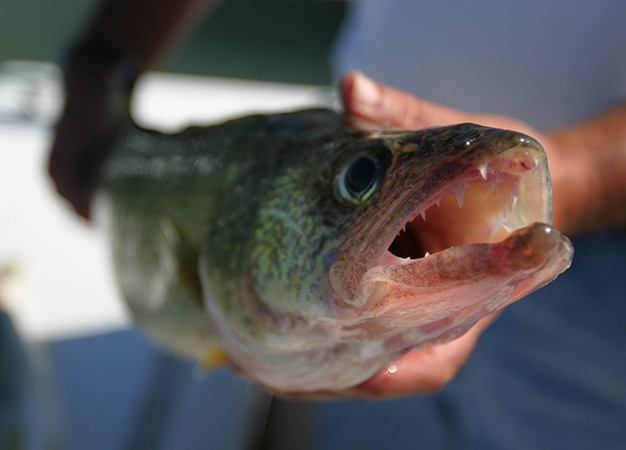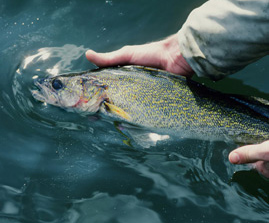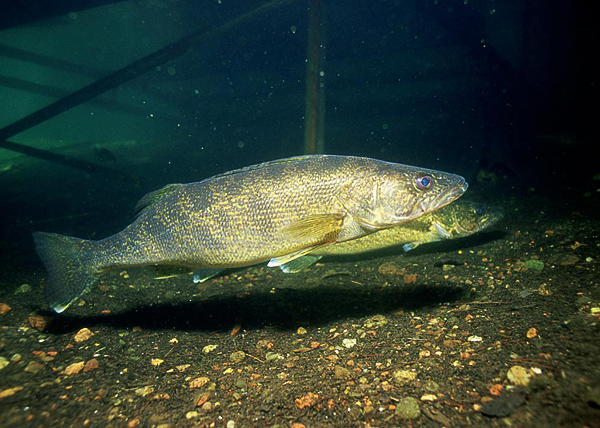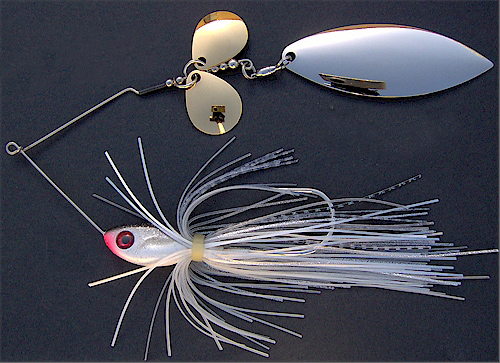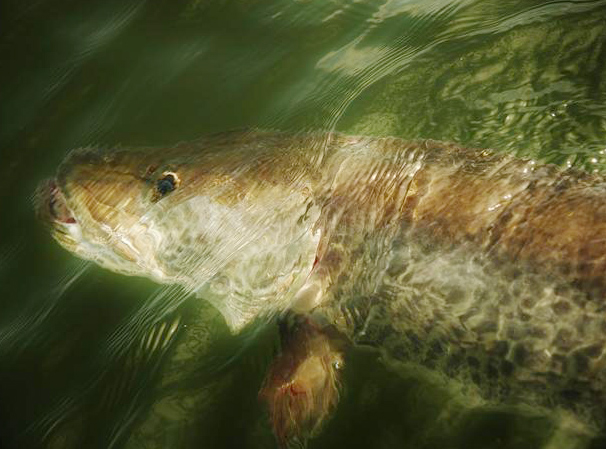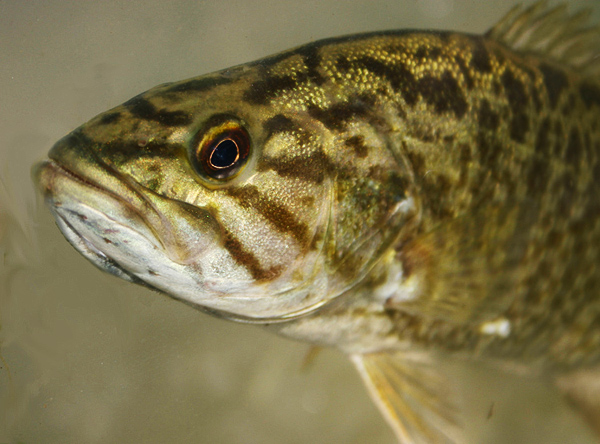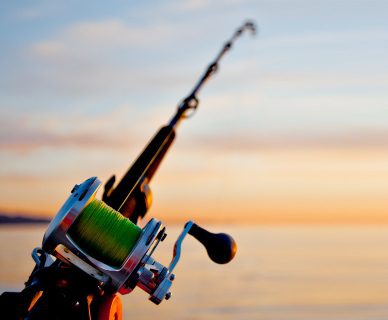The ice was 8 inches thick, yet you could still see the shape of the pike through the ice as it fought against the hook. Indeed, the 10-pounder pulled up on 15 yards of dracon line on it’s initial run, took a short breather, then took off again for a longer pass under the ice.
It required hand-over-hand combat to hoist the fish out of the ice hole. But using steady give-and-take pressure, some experience, and some luck – it can be done.
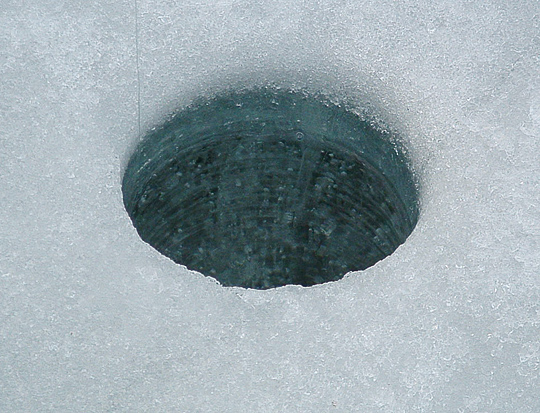 While most anglers are busy plumbing the depths, some prefer to pursue pike under ice in less than 10 feet of water, and, depending on structure and available cover, some will even fish in waters less then 6 feet deep.
While most anglers are busy plumbing the depths, some prefer to pursue pike under ice in less than 10 feet of water, and, depending on structure and available cover, some will even fish in waters less then 6 feet deep.
Pike come into the shallows because that’s where their food is located. As winter continues, you get more.
Timing plays a key factor in shallow water ice-fishing, something that can be very difficult to predict. People who go after panfish know there’s a time when pickings will be slim. When the bluegills and perch are really scattered in deep water, this is when it’s tough for pike fishing also. You’ll catch some, but most pike aren’t on the feed, and what’s worse, you get a lot of dropped baits, which is always frustrating.
Yet as winter slowly turns into spring, panfish get easier to catch in the shallows and so do the pike. As bluegills, crappie and perch move into the shallows for the first stages of their spawning run, the water wolves move in too. The best shallows are near channels, drop-offs and underwater points. Rock piles, weeds and stumps all help to attract fish. Stumps are like curtains pike hide behind.
It is believed the wood and the dark shallow bottom warm the water just enough for plankton and aquatic insects to become active earlier than their counterparts in the deeper parts of the lake. This, in turn, draws the minnows and panfish which soon draw the walleye and pike.
Bass and crappie anglers often submerge fish-attracting cribs in the shallows, and if the cribs are in at least 4 feet of water, there’s a good chance they’ll attract winter pike too. However, be advised, a big pike can quickly pull a line into a crib, where it will often snag. When fishing for pike by a crib, it is recommended that you give it a berth of about 7 feet, close enough to take advantage of the attraction, but far enough to avoid snags. You don’t need to fish right off of a rock pile or stump wither, if the toothy critters spot a lively they will come out and chase it.
The best baits for this type of fishing include any big, soft bodied baitfish, such as a sucker or even young carp. Big shiners up to 6- inches are often available at most bait shops where winter pike fishing is popular. The tackle of choice being a tip-up or trap. Frabill’s Big Foot Classic (has an extra large capacity spool) works well. 45-pound-test Dacron line works well for muscling big fish out of the water. In addition, the spool has dual crank handles, which help eliminate wobble and makes the reel run smoother overall.
When not trophy fishing for pike or muskie over 15 pounds, copolymer leaders work great. It allows some tooth cut lines, but in water with good clarity, a clear leader will produce more strikes. If you really want to land the big-fish-of-the-day or on a trip, switch to a 6-inch black wire leader. In lakes stained tea-color by tannin, it’s recommended to use black leader all the time. Bright silver leaders or steel coated leaders defiantly decrease the amount of strikes received.
By setting the hook on the pike’s initial run, you can increase the chance of getting a hook set in the top of the mouth as opposed to one in the corner of the mouth, where the pike is most likely to slice a line leader. However, a quickset with only one hook also causes many pike to drop the bait.
The surest rig uses a flexible wire to connect a pair of sharp treble hooks. The bait is hooked either behind the head or at the front of the dorsal fin and then again near the tail. Of course many a pike has been caught with just one treble hook through the dorsal fin. The advantage of this setup is that it adds very little weight to the presentation, and the bait fish hangs horizontally, as it naturally should when lowered from the tip up.
While some anglers prefer to strike at the first signs of a running pike, others prefer to wait until the fish stops its initial run. At this point, the pike is probably turning the bait in its mouth. When the pike resumes its run, that’s when the angler sets his hook.
Pike caught in the cold shallow water are especially tasty. The also have a very good chance of surviving proper catch and release techniques. Use this resource wisely.


